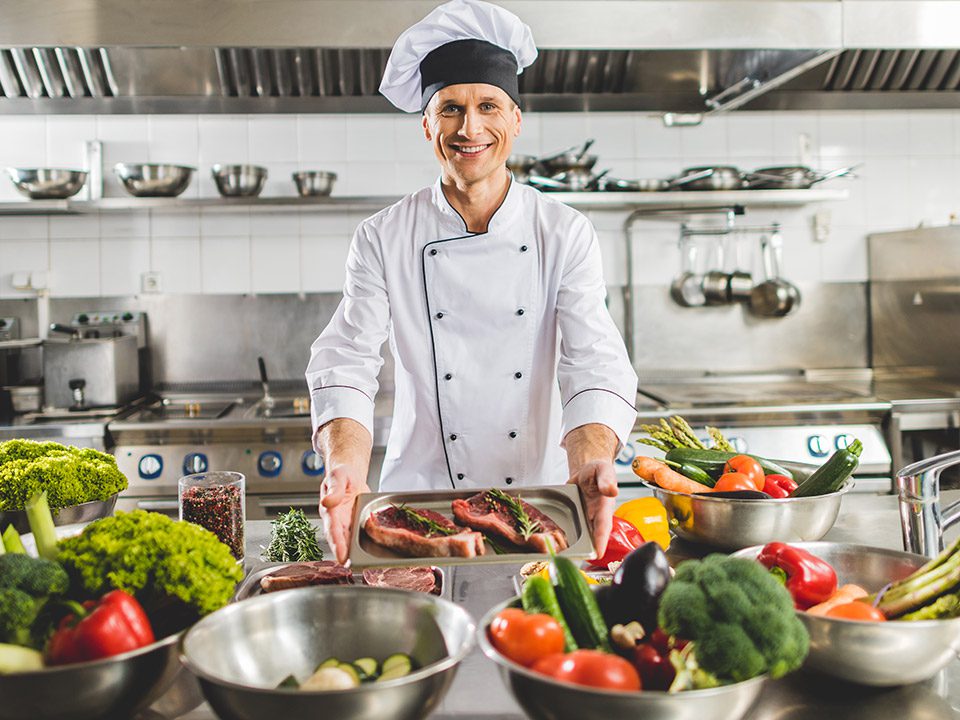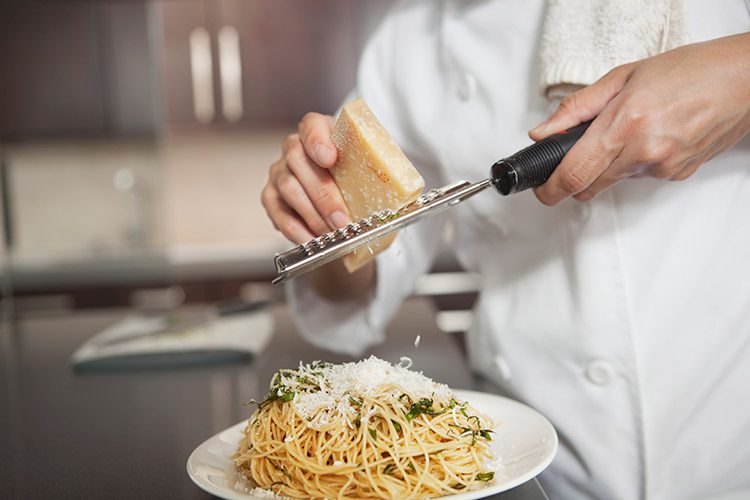One of the “secret” tricks that sets restaurant meals apart from home cooking is the addition of certain ingredients right before serving. These finishing touches help round out the flavor profile of a dish, add to the presentation and elevate the dining experience overall. Here are 12 finishing touches to add to your meal that you can experiment with at home, from olive oil to toasted nuts:
Salt and pepper
Salt and pepper are classic finishing touches for a reason: they go with almost every dish and greatly enhance the flavor. We recommend choosing big flaky sea salt and fresh ground pepper for the biggest impact on your final dish. Put them on the table at mealtime so each person can flavor the meal according to their individual preferences.
Fresh or dried herbs
You are not just limited to salt and pepper, either! Both fresh and dried herbs of all kinds are great additions to a dish right before serving.
Olive oil
Sometimes, a drizzle of olive oil is the secret key to pulling your entire meal together. For the biggest flavor, choose extra virgin olive oil, which has not been processed or refined and this will preserve the olive oil’s sharp, peppery, grassy taste. If you really want to make a statement, then go for a flavored olive oil that has been infused with chili, garlic, lemon or even basil for extra flavor.
Flavored vinegars
For other dishes, a touch of acid is what you need to cut through the other flavors and elevate the meal to the next level. Flavored vinegars run the gamut from extra light champagne vinegar to super robust balsamic vinegar, giving you a wide range of choices to suit a variety of meals. We always keep several varieties stocked in our pantry so we are ready to go no matter what cuisine we are cooking up that night.
Citrus juices
If vinegar is not quite right, but you still need an acidic finishing touch, try citrus juices instead! Lemon juice and lime juice are the most common but you can also branch out into orange juice, grapefruit juice, etc. For the strongest and freshest flavor, squeeze the raw fruits right before serving and try to avoid the bottled juices if possible since they are often full of additives.
Cheese
When in doubt, add cheese to your dish. Grating hard cheese such as parmesan over a dish right before serving will add a savory, fatty note to it. You can also add soft cheese such as mozzarella right before serving if you do not want the cheese to melt before it is time to eat.
Raw honey
In some situations, the dish calls not for something savory or acidic, but rather for something sweet. For these meals, we are partial to raw honey, which comes in a wide variety of flavors and offers nutritional benefits to boot. Choose the flavor that will complement the meal best and drizzle the honey on it right before serving.
Pesto
A simple homemade pesto made with extra virgin olive oil takes ordinary pasta from blah and boring to delectably divine with just one toss. To avoid making the pasta soggy and to prevent the fresh herbs in the pesto from browning, mix the pesto in just before serving. If you plan to have leftovers, reserve that part of the pasta and pesto so you mix together individual portions as necessary.
Glazes
By definition, glazes should be added at the end of the cooking or baking process. For meats and vegetables, this allows the glaze to caramelize a little without over-browning it. For baked goods, doing the glaze last ensures that the pastries do not become too soggy before serving. Most recipes will include instructions for when to add the glaze so that you do not overdo it.
Fresh vegetables
Similar to the fresh herbs, fresh vegetables can get soggy if cooked too long. If you want the vegetables to bring some crunchy texture to the meal, leave them raw or gently blanch them and then add them to the dish right before you plate it. This is especially important with soups, stews, braises and other dishes that cook on low heat for long periods of time.
Crunchy carbs
Speaking of crunchy elements, these should all be added right before serving for maximum snappiness. Toasted breadcrumbs over pasta, crushed tortilla chips over chili, crispy noodles over a stir fry — all of these bring a much-needed textural element to dishes that are otherwise lacking in crunchiness.
Toasted nuts
Chopped nuts are a great way to add protein, flavor and crunch to salad, pasta and more. For maximum flavor, gently toast the nuts before adding them to the dish and keep a sharp eye on them to prevent accidentally burning them, which happens more easily than you might think.



